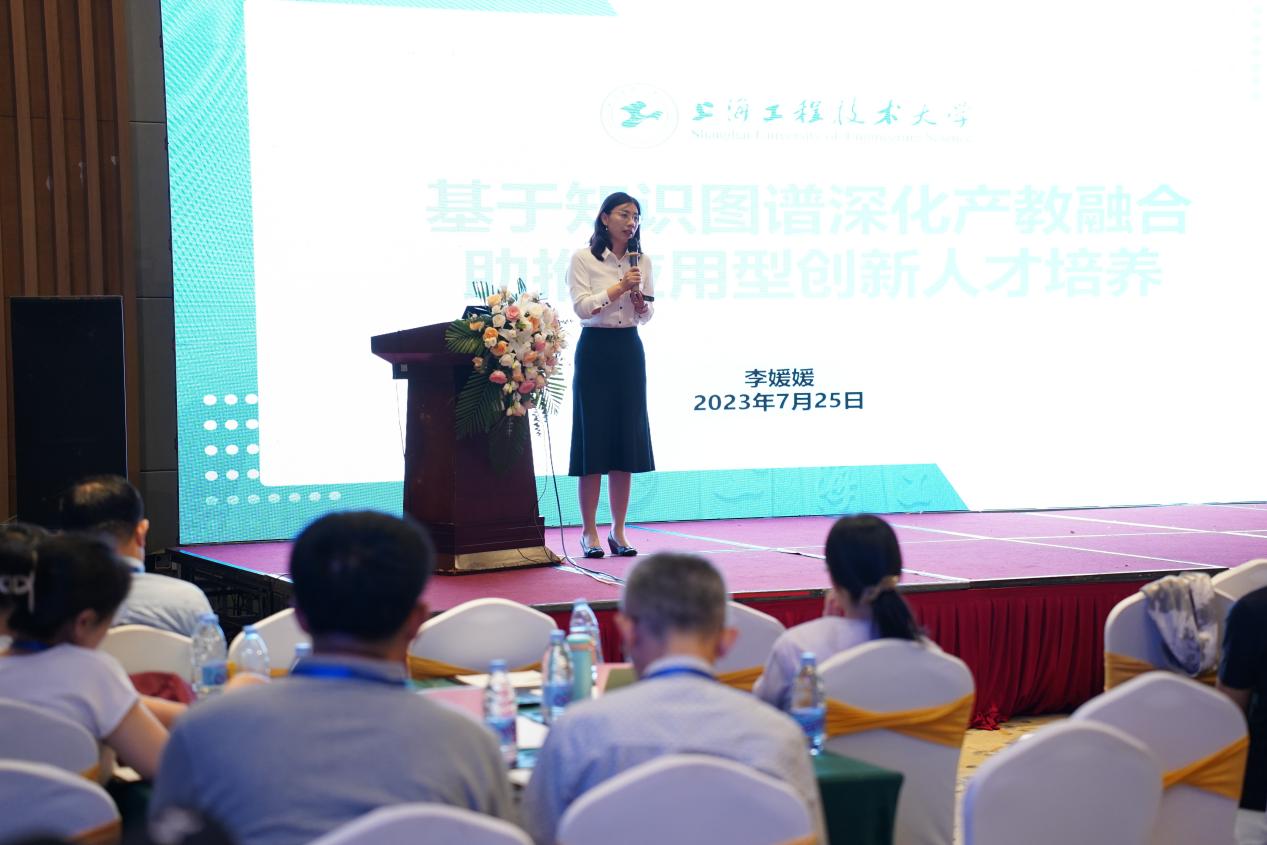
On July 25th, Professor Li Yuanyuan, Dean of the School of Electronic and Electrical Engineering, was invited to participate in the "Intelligent Innovation, AI Creating the Future" seminar on digital teaching reform and construction in universities. At the conference, she gave a report entitled "Deepening the Integration of Industry and Education Based on Knowledge Graph to Promote the Cultivation of Applied Innovation Talents", and elaborated on relevant experiences from four perspectives: school characteristics, integration of science and education, integration of industry and education, and talent cultivation.
Dean Li Yuanyuan pointed out in the report that Shanghai University of Engineering and Technology has always been committed to cultivating high-quality engineering applied talents with innovative spirit and practical ability. In order to better achieve this goal, the college actively explores new models of science education integration and industry education integration to improve education quality and training effectiveness. Among them, the reform plan of talent cultivation mode using knowledge graph as a tool has received widespread attention. She stated that the School of Electronic and Electrical Engineering will deepen the integration of science and education, industry and education, increase cooperation with leading enterprises, and promote the application of knowledge graphs in intelligent manufacturing and talent cultivation. Dean Li hopes to contribute more to China's digital teaching reform and the cultivation of applied innovative talents through cooperation with enterprises such as Wisdom Tree.
This report received unanimous praise from the attending experts, who expressed their willingness to learn from the advanced experience of the School of Electronic and Electrical Engineering at Shanghai University of Engineering and Technology, and explore digital teaching reforms and talent training programs that are suitable for themselves. It is reported that knowledge graph is a technology that constructs entities, concepts, and relationships into a network structure, which can better understand and analyze complex information. In industrial enterprise scenarios, especially in the application of large models, knowledge graphs have certain advantages. In talent cultivation, knowledge graphs can provide students with richer and more three-dimensional learning resources, helping them better master professional knowledge and skills. Meanwhile, knowledge graphs can also help teachers better understand students' learning situations and provide personalized teaching support for them.